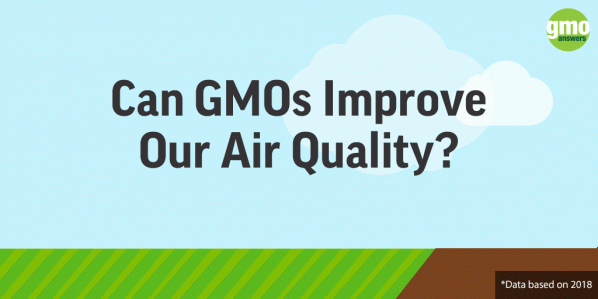Question
How can Monsanto assure that artificial GMO genes do not propagate into natural ecosystems or non-GMO crops?
Submitted by: Jay the Foodie
Answer
Expert response from Cathleen Enright
Former Executive Director of the Council for Biotechnology Information
Friday, 07/03/2014 11:59
The short answer can be found in the last paragraph of this response, but I thought in responding to your question, I might first correct a misconception and then spend just a minute talking about gene flow to ensure we are starting from the same place.
GMO genes are not artificial. They are already found in nature. Bt genes, for example, are genes found in the soil bacteria Bacillus thuringiensis, which are ubiquitous around the world. (Smart organic farmers have been applying these bacteria to crops for almost 100 years, to combat pests that Bt crops also target.) With GM technology, we are able to incorporate Bt genes with precision and predictability into seeds from which GMO crops are grown. By incorporating the Bt gene into the crop, growers avoid having to apply the Bt spray repeatedly.
Just as the genes found in GM crops are natural, so, too, is the movement of genes (gene flow). Not surprisingly, it occurs regularly in agricultural production systems where the same crop species are grown next to each other (discussed below). What surprises most people—and fascinates biologists—is how often gene flow between different species occurs in natural ecosystems.
All of us see clearly that a group of organisms, such as birds, is divided into different species that don’t seem to mate with one another. And birds never mate with mammals. Those obvious differences have been very useful for the group of biologists (taxonomists) whose job it is to sort all of nature’s remarkable diversity into categories, called taxons.
Mother Nature, however, does not appear to agree with the human view of the world! When viruses infect people, birds, plants or bacteria, they often leave some viral genes in the genetic material of their host. That makes perfect sense, given the way viruses work, so it was not a surprise to scientists.
What fascinates scientists is the amount of gene flow that has nothing to do with viruses, and the taxonomic breadth over which genes move back and forth. In fact, it is this natural movement of genes between different taxonomic kingdoms that first gave scientists the idea that it might be possible to genetically engineer crop plants.
One of the tools that plant breeders use to insert new genes into crops to create a GMO is a bacterium (Agrobacterium) that naturally infects plants in nature. When scientists began to look at the genetic makeup of Agrobacterium and the plants it infects in nature, they realized that at some point in the evolutionary histories of the bacterium and its host plants, Agrobacterium had left some of its genes behind in the plants’ genomes and had also kept a few of the plants’ genes for itself.
I am attaching a link to a very recent article that discusses the evolution of flowering plants. The author mentions, in passing, that an ancient species of flowering plant has genes that were “given” to it by an algae species that lives in it and a moss species that lives on it. What is most striking about this article is that that topic—“horizontal gene exchange,” or gene flow—between organisms in very different taxonomic groups (one is a kingdom difference!) is not even the focus of the article.
Instead, it’s just a throwaway comment. That indicates just how unsurprising gene flow between species in natural ecosystems is to biologists now.
http://shar.es/9TwFV The genome of Amborella trichopoda—the sister species of all flowering plants—provides clues about this group’s rise to power.
With regard to gene flow, the question is not does it happen, but what is the result when it happens? To answer this question, prior to the commercialization of any GMO seed, USDA requires seed developers, including Monsanto, to ensure that the movement of genes during the cultivation of GMO crops will not harm non–target organisms (insect or plants) in the natural ecosystem, nor will it present a pest risk to other crops. Only after USDA has reviewed this information, and other scientific information from relevant studies conducted around the world, does USDA issue its decision.
Answer
Expert response from Dr. L. Curtis Hannah
Professor, University of Florida
Friday, 07/03/2014 11:57
Thank you for your question.
In order for Monsanto to be in a position to make such assurances, it would have to have total control of plant agriculture, from planting to consumption. This is not the way modern agriculture and the food chain function. And I have not heard of any suggestion that Monsanto (or any other seed company that sells GMO crops) should control these activities.
It should be mentioned that seed producers have the right to protect their invention from subsequent unlicensed propagation, through the Plant Variety Protection Act or conventional utility patents. These were in place long before the advent of biotechnology, and there is a long history of seed producers legally protecting their materials, both GMO and non-GMO.
It should also be mentioned that transgenic crops on the market have successfully satisfied the requirements of the USDA, the EPA and/or the FDA. The technology has been endorsed by the American Medical Association, the prestigious National Academy of Sciences and the 8,000-member American Society of Plant Biologists. There is no credible reason to question their safety.
I hope this gives you better insight into the modern agricultural system in the United States.
How Do GMOs Benefit The Environment?



